I’m Jai Sanchez and I’m spending my summer in Santa Barbara California studying marine and coastal life at UCSB/the REEF. (Research Experience & Education Facility) The REEF is part of the Marine Science Institute’s (MSI) education and outreach program. The REEF is dedicated to teaching everyone about coastal, and marine life and how to preserve it. Since the REEF is a part of MSI, we also study and conduct research. One of our current research experiments is how heat waves may affect the red urchin’s development of their gonads, commonly known as uni. Uni is a multi-million-dollar fishing industry in California and is sent all over the world.
On Monday, I started my day off with Fern, our shark aquarist. Fern specializes in taking care of the REEF’s sharks. Currently we have two different species of sharks at the REEF, horn sharks and swell sharks. Both are ground dwelling sharks. Fern taught me the general anatomy of sharks, and how to quarantine sharks. One thing we monitor is their color, specifically if they begin to have red rashes since they may indicate sickness. They may be from domoic acid blooms, which are harmful to marine life. Afterwards we attended the weekly aquarist meeting where aquarists discuss general changes that needed to be made to the REEF. After the aquarist meeting me and our tropical aquarist, Marine did round two of scuffing and buffing. Scuffing is the process of sanding previous scratches out of the tank. Scuffing is important for two reasons, one it allows you to see into the tank more clearly, and two it prevents the growth of algae in tiny crevices where you won’t be able to scrape it off. Buffing is polishing the glass after it has been sanded leaving it shiny and clear. I finished my day doing an early education and outreach program with local fifth through sixth graders. Marine and I took them on the bluff walks where we explained to them the importance of data collection and the removal of our invasive plant species, the ice plant which has taken over Santa Barbara.
Tuesday was the Fourth of July. My host family took me to the beach and local wharf for the day. There was a big barbeque and games. Later that night we went out to watch fireworks.
On Wednesday I helped prepare food for the different tanks. It is important to prep food so that each tank will have what each animal needs in proper portions when they need to be fed. After prepping food with Fern, Gianna our abalone aquarist came in to teach me about the abalones. Abalones are a large type of sea snail that are critically endangered and considered reproductively extinct. Very few abalones are left in the wild after being overfished. MSI is part of one of many programs hoping to research, restore, and grow the abalone population. I learned the anatomy of the abalone, different types of abalone, and how to properly care for the abalone. Our abalone holding facility is very particular about how we care for them. They receive very specially filtered water which goes through 20, 10, and 5 grain filterage systems and then pumped through a UV filter to make sure nothing harmful is introduced into their tank. It is also especially important to wash your hands every time you interact with the abalone’s food to prevent parasitic infection. After learning about abalones, I explored campus. I went on the Bluff walk which overlooks the ocean and beach where I saw Samuel the Squirrel.
Thursday morning, we did some intense siphoning. It is required by IACUC that the tanks are siphoned in less than 36 hours to retain pristine water quality. Afterwards Gianna and I worked on species ID where I learned about our Echinoderms and Cnidarians. Sea stars (not starfish), urchins, brittle stars, and sea cucumbers are in the echinoderm phylum. Echinoderm derives from the Greek word echinos which means spiny and derm meaning skin, although not all echinoderms have spiny skin, like sea cucumbers which have soft bumpy skin. Cnidarians are soft and sting. Jellyfish, coral, and anemones, are part of the Cnidarian phylum. Later, Scott, Fern, and I moved our sharks around to decrease the chance they are exposed to algae which we speculate causes the redness on the shark’s stomachs. We proceeded to move the sharks so we could avoid putting them in tanks with mussels as currently filter feeders such as mussels are a risk to vertebrates because of domoic acid. Domoic acid is released from large algae blooms where filter feeders will proceed to filter the domoic acid into their bodies. From there fish, and other marine vertebrates will consume the domoic acid and the acid will move up the food chain. Larger animals that are higher on the food chain are more greatly affected by the domoic acid because of bioaccumulation. An animal that consumes a large amount of prey is going to consume more domoic acid than a mussel who filters some of it from the water column. Domoic acid is a major problem in Santa Barbara currently and has caused a huge die off.
Unfortunately, Scott, my director, was exposed to Covid-19 during his travels and I spent Friday in isolation to prevent the possibility of spreading more disease. Luckily, I didn’t have any symptoms over the 24 hours and because I had limited close contact with Scott.
Luckily, I got to come into the REEF on Saturday for open doors day. Every Saturday from 11-3 we host open doors where the community can come in free of charge to experience our touch tanks and learn about the local environment. It was a great experience for me as I got to teach people about our local ecosystem and species with a hands-on experience.

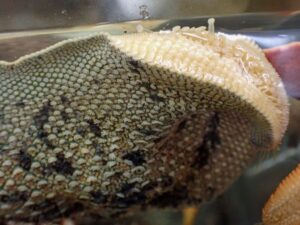
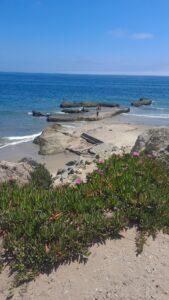
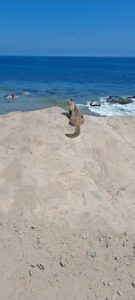
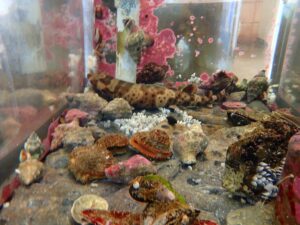
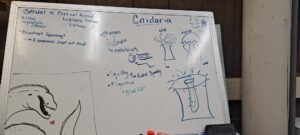
There are no comments published yet.